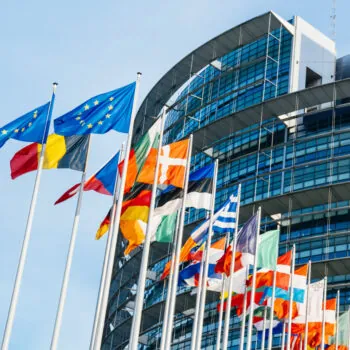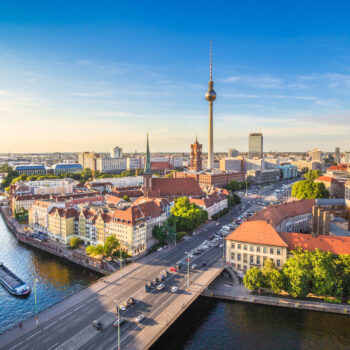Over the coming 5 years there are several key openings for injecting ambition into the next chapter of international climate action.
THE LONG ARC
- In the Paris Agreement, 196 governments committed to hold global average temperature rise to well below 2°C, pursue efforts to limit the rise to 1.5°C, and to ensure that – by the second half of the century – humans are not emitting more greenhouse gases than the planet can absorb.
- For temperature stabilisation at 1.5°C, greenhouse gas emissions will need to reach net zero by 2060-2080; for 2°C, net zero GHG must be reached by 2080-2100.
- Current climate policies will not achieve the aims of the Agreement, but that doesn’t render these targets impossible.
- For the first time in the history of global climate policy, the Paris Agreement also established an ongoing, regular process to increase action by all countries – dubbed the “ratchet” or “ambition mechanism”.
- From now until the global temperature has been stabilised, countries must come together every 5 years to take stock of progress and – informed by this stocktake – submit a climate action plan that is progressively more ambitious than the last.
- This mechanism is what makes the Paris Agreement a dynamic and long-lasting accord that will be responsive to the science of climate change, shifts in technology and economic opportunities, and to growing public support for action.
THE NEXT CHAPTER
The next chapter after Paris will demand more diverse and detailed actions to deliver COP21 outcomes. These include:
- Formally joining the Paris Agreement – Governments around the world must double down on the goodwill of Paris by acknowledging that they accept the Agreement at a national level and by outlining their timetable for ensuring the agreement has the full force of international law.
- Defining the details of the Agreement – Over the course of the next few years, negotiations will continue to elaborate the rules and details of the Paris Agreement to ensure environmental and social integrity.
- Set the stage for ambition – There are various opportunities (with the 2018 stocktake being the most significant) over the course of the next few years for governments to inject more ambition and create a strong springboard for action after 2020.
- Mainstream climate action – Paris mandated other institutions and sectors to recalibrate their plans to be compatible with the outcomes of COP21. In addition, it will be important to ensure that climate change remains a clear global agenda item for both current and incoming national and international institutional leaders, such as the incoming UN Secretary General.
INJECTING AMBITION AHEAD OF 2020
While the provisions of the Paris Agreement won’t fully kick in straight away, there are still several key openings to inject ambition ahead of 2020. The work to build a strong springboard for future action begins today.
There are a variety of decisions which need to be taken ahead of 2020, but outlined below are the actions that can inject real emissions reductions into the climate system before Paris comes into full effect.
In the coming months and years, we need Governments to:
- Build on a foundation of robust and honest rules. Many of the rules of the Paris Agreement still need to be negotiated amongst Governments – and it is essential that these are designed to squeeze in as much ambition as possible, through honest counting of our emissions and support for the transition. For example, countries' "Nationally Determined Contributions" (i.e. their climate plans) must work towards covering all sectors of the economy so that cuts made in one area are not offset by rising emissions in another. The rules must be tightened up to create a strong platform for all future rounds of ambition. The design of the rules can make a material difference on emissions reduced.
- Take and accelerate early action. We know that some countries will almost certainly overachieve on their targets for 2020 (e.g. the EU and China) and these Governments should be honest about this over-achievement; using it as an opportunity to celebrate their success and ramp up their ambition for 2030 (rather than using this over-achievement to give themselves an easier ride later on).
- Provide support for the transition in developing countries. Paris acknowledged the new logic that all countries should act, albeit at different speeds and that some will require support. In order to secure early action from many poor countries, developed countries will need to tell developing countries how they will reach the target of $100bn per annum by 2020, in order for developing countries to plan for more ambitious early action.
- Go beyond CO². Governments must use the positive momentum coming out of Paris to drive action on other greenhouse gases and across other sectors that are not covered by the UNFCCC. For example, by agreeing to a full phase out of HFCs through the Montreal Protocol, and setting emission reduction targets for international aviation and shipping.
- Create transformational investment plans. Now that we have the long-term global goals and the short-term national INDCs – and a means to regularly check in and improve progress –governments need to turn these outlines into reality. By laying out clear pathways to deliver both the climate and development objectives agreed in 2015, they can help to enable more investment opportunities into their economies. Done well, the 2050 plans called for in the Paris Agreement offer an excellent opportunity to engage citizens in this visioning exercise; sowing the seeds for a much deeper & wider social appetite for ambition, which Governments will be able to reap at each interval along the way. These plans make it easier to argue the case for early action, and help to deliver material abatement.
- Shape financial flows to ‘shift the trillions’ from dirty to clean energy. Governments need use their stake in international institutions to ensure that they are climate compatible (e.g. ensuring that all investments made through multilateral development banks are aligned with the long term goals agreed in Paris). Consistency and certainty can mobilise trillions of additional dollars into climate-compatible development, producing real impacts on emissions reductions.

.jpg)

